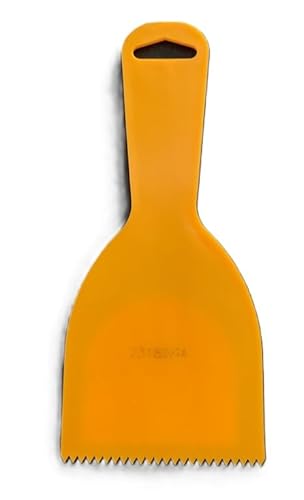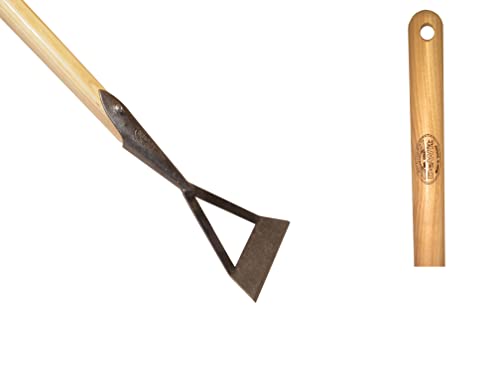


Tungsten carbide circular saw blades are commonly used in various industries for cutting materials such as wood, metal, plastic, and more. Over time, these blades can become dull and lose their cutting efficiency. However, sharpening tungsten carbide blades requires specialized equipment and techniques.
One of the most effective ways to sharpen tungsten carbide circular saw blades is by using a diamond wheel grinder. This type of grinder is specifically designed to maintain the hardness and sharpness of tungsten carbide blades. The diamond wheel rotates at high speeds, allowing it to grind away the dull edges of the blade, exposing a fresh, sharp cutting edge.
It’s important to note that sharpening tungsten carbide circular saw blades should only be done by trained professionals or individuals with experience in blade sharpening. Improper sharpening techniques can cause damage to the blade and reduce its lifespan. Additionally, using a dull or improperly sharpened blade can result in poor cutting performance and a higher risk of accidents.
To sharpen a tungsten carbide circular saw blade:
- Ensure that the blade is clean and free from any debris or contaminants.
- Secure the blade in a vice or clamp to prevent it from moving during sharpening.
- Using the diamond wheel grinder, carefully apply light pressure to the blade, moving it back and forth across the wheel to sharpen the entire cutting edge.
- Check the blade periodically during sharpening to ensure that the cutting edge is evenly sharpened.
- Once the blade is sharpened, clean off any excess debris and test its cutting performance before using it.
Remember to always wear appropriate safety gear, such as gloves and eye protection, when sharpening tungsten carbide circular saw blades. If you are unsure about sharpening the blade yourself, it is best to seek assistance from a professional blade sharpening service.
Sharpening Tungsten Carbide Circular Saw Blades
Tungsten carbide circular saw blades are known for their durability and long-lasting sharpness. However, over time, even the toughest blades can become dull and need sharpening to maintain their cutting efficiency. Here are some steps to help you sharpen your tungsten carbide circular saw blades:
- Prepare the blades: Before you begin sharpening, ensure that the blades are clean and free from any debris or residue. This will make it easier to work with them and ensure a better result.
- Secure the blades: Use a blade holder or a vice to securely hold the saw blades in place. This will prevent any accidents or injuries while sharpening.
- Choose the right sharpening tool: There are different tools available for sharpening tungsten carbide circular saw blades, such as diamond files or grinding wheels. Choose the tool that works best for you and your blades.
- Follow the manufacturer’s instructions: Different types of tungsten carbide circular saw blades may have specific instructions for sharpening. It is important to follow these instructions to achieve the best possible result.
- Start the sharpening process: Begin the sharpening process by carefully running the chosen sharpening tool along the cutting edge of the blade. Make sure to maintain a consistent angle and apply even pressure.
- Monitor the progress: As you sharpen the blades, periodically check their sharpness by visually inspecting the cutting edge. If necessary, continue sharpening until the desired sharpness is achieved.
- Clean the blades: After sharpening, clean the saw blades to remove any metal shavings or debris. This will ensure that the blades are ready for use.
- Test the blades: Before using the blades, it is essential to conduct a test cut to ensure that they are properly sharpened and ready to perform at their best.
By following these steps, you can effectively sharpen your tungsten carbide circular saw blades and restore their cutting performance. Remember to always prioritize safety and carefully read and follow the instructions provided by the manufacturer for the best results.
Why Sharpening is Important
Sharpening tungsten carbide circular saw blades is crucial for maintaining their performance and longevity. Here are a few reasons why sharpening is important:
- Improved Cutting Efficiency: Regularly sharpening the blades ensures that they maintain a sharp cutting edge. This allows them to cut through materials with ease, resulting in improved cutting efficiency and reduced work time.
- Extended Blade Lifespan: When blades become dull, they not only cut less efficiently but also put extra strain on the machinery. By sharpening the blades, you can minimize wear and tear, ultimately extending their lifespan and saving on replacement costs.
- Consistent Cut Quality: Sharp blades ensure a clean and precise cut. Without proper sharpening, the blades may start tearing or leave rough or uneven edges. This becomes especially important when working with delicate or expensive materials where precision is crucial.
- Increase Productivity: Dull blades require more force and effort to cut through materials, which can slow down the workflow and decrease productivity. By maintaining sharp blades, you can ensure smooth and efficient cutting, resulting in increased productivity and reduced downtime.
- Safe Operation: Dull blades can cause kickbacks, overheating, and other safety hazards. Sharp blades reduce the risk of accidents by providing better control over the cutting process and reducing the likelihood of blade slippage.
Regularly sharpening tungsten carbide circular saw blades is essential for achieving optimal cutting performance, maintaining accuracy, and ensuring maximum safety. By investing time and effort into sharpening, you can enjoy the benefits of improved cutting efficiency, extended blade lifespan, consistent cut quality, increased productivity, and a safer working environment.
Sharpening Methods for Tungsten Carbide Blades
When it comes to sharpening tungsten carbide circular saw blades, there are several methods you can use. Each method has its pros and cons, so it’s important to choose the one that suits your needs and equipment. Here are some popular methods:
1. Diamond Grinding Wheels
Using diamond grinding wheels is one of the most common methods for sharpening tungsten carbide blades. Diamond is a super-hard material that can effectively grind the carbide surface, removing any dullness or imperfections. This method requires specialized machinery equipped with diamond grinding wheels. It is important to follow the manufacturer’s instructions to ensure proper sharpening and avoid any damage to the blade.
2. Wet Grinding
Wet grinding is another effective method for sharpening tungsten carbide blades. It involves using a coolant or water to lubricate the grinding process, reducing heat buildup and preventing the blade from overheating. This method is suitable for hand-held grinders or bench grinders with a water reservoir. Make sure to use the appropriate grinding wheel and follow safety precautions to prevent accidents and achieve optimal results.
3. Electroplated Diamond Files
Electroplated diamond files are small, handheld tools with diamond coating that are used to manually sharpen tungsten carbide blades. This method is suitable for minor touch-ups and repairs, where precision and control are required. Simply use the diamond file to gently grind away the dull areas of the blade, maintaining a consistent angle. Regular maintenance and cleaning of the diamond file are essential to ensure its effectiveness and longevity.
Regardless of the method you choose, it is important to always check the manufacturer’s recommendations for the specific blade model. Proper sharpening techniques and regular maintenance are essential for extending the lifespan of your tungsten carbide circular saw blades.
Sharpening Tips:
Here are some general tips to keep in mind when sharpening tungsten carbide blades:
- Always wear appropriate safety gear, such as safety goggles and gloves, to protect yourself during the sharpening process.
- Ensure that the blade is clean and free from any debris or residue before sharpening.
- Follow the manufacturer’s guidelines for the correct sharpening angle and pressure.
- Check the blade’s condition periodically and perform routine maintenance to prevent excessive wear or damage.
By following the proper sharpening methods and taking care of your tungsten carbide circular saw blades, you can ensure their longevity and maintain their cutting performance over time.
| Method | Pros | Cons |
|---|---|---|
| Diamond Grinding Wheels | – Effective in removing dullness – Suitable for bulk blade sharpening |
– Requires specialized machinery – Can be expensive |
| Wet Grinding | – Lubricates the grinding process – Prevents blade overheating |
– Requires appropriate grinding wheels – Potential mess with water/coolant |
| Electroplated Diamond Files | – Offers precision and control – Portable and suitable for touch-ups |
– Limited for minor repairs – Can be time-consuming for large blades |
Tips for Sharpening Tungsten Carbide Blades
Sharpening tungsten carbide circular saw blades requires attention to detail and careful handling. Here are some tips to help you achieve optimal results:
- Use a diamond wheel or a diamond honing stone to sharpen the blades. Tungsten carbide is a hard material, and diamond is the only substance that can effectively sharpen it.
- Start by cleaning the blades thoroughly to remove any debris or built-up resin. This will ensure a clean and smooth sharpening process.
- When sharpening, maintain a consistent angle of about 10 to 15 degrees. This will help maintain the original cutting edge profile of the blade.
- Apply light pressure and make smooth, even strokes when sharpening. Avoid applying too much pressure, as this can cause overheating and damage to the blade.
- Rotate the blade periodically as you sharpen to ensure even wear and maintain the blade’s balance.
- After sharpening, use a honing compound to polish the cutting edge. This will help achieve a razor-sharp finish and improve the blade’s overall performance.
- Always wear protective gloves and eyewear when sharpening tungsten carbide blades. The material is extremely hard and can cause injury if not handled properly.
- Regularly inspect the blades for any signs of wear or damage. Replace any blades that are excessively worn or have chipped or cracked teeth.
By following these tips and taking proper care of your tungsten carbide circular saw blades, you can extend their lifespan and maintain their cutting performance for longer periods.







